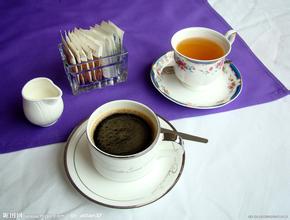Coffee altitude-how high is the altitude for growing coffee beans?
Coffee altitude-how high is the altitude for growing coffee beans?
Altitude will directly affect the appearance of coffee beans. When you take a closer look at raw coffee beans, you will find that the size and density of each kind of coffee are different. Are the coffee beans in your hand small and dense? Is the gap in the middle of the bean tightly closed or open? Is the gap straight or curved? Is the color of coffee beans close to jade, light green or blue? The shape characteristics of the bean body can directly reflect the growth altitude of coffee beans.
The best quality coffee beans are usually strong and grow at an altitude of more than 4500 meters. The growth of these coffee beans is very slow, so the density of the beans is very high, and the gap in the middle of the beans should be curved. In contrast, coffee beans grown at low elevations usually have a lower density and slightly open gaps in the middle. As for the color of the bean, the growing environment of the coffee bean and the processing technology of the raw bean will affect the color of the coffee bean. If the same kind of coffee beans produced on the same plantation are treated differently, for example, one batch is washed with water and the other batch is treated with honey, then the colors of the two batches of beans will be very different. Generally speaking, the density of beans is the most powerful basis for judging the altitude of coffee bean growth. In fact, many years ago, I repeatedly found that in a normal year, within the altitude range that experts think can be planted, frost occurs repeatedly in individual terrain, even in the range of 800-900 meters. However, in the high-altitude areas where experts believe that coffee cannot be grown, more than 1400 meters or even 1700 meters above sea level, there is no severe frost damage predicted by experts. Therefore, I put forward the theory of using topography to determine the unsuitable and sub-suitable areas for coffee cultivation, and negated the theory of using altitude to measure the suitable areas for coffee cultivation.
In fact, the best blue mountain coffee in the world is grown at an altitude of 1500-2100 meters. As long as coffee cups can be tested slightly, coffee people have a common understanding that alpine clouds produce good coffee, and coffee prefers a shady environment. Rather than the coffee that many of our experts think must be planted in hot areas at low elevations, we are surprised that many of our coffee experts do not drink coffee, let alone cup testing. I can't imagine how he knows what kind of coffee is good coffee. Over the years, a group of the most authoritative coffee growers in China have written books and repeatedly stressed that coffee cultivation should not exceed 1200 meters above sea level, otherwise there will be the danger of frost!
I have been arguing with experts on this issue for several years, including how to express it in some of the standards we have developed. I have summed up from the production practice that the choice of coffee planting land can not be measured entirely by altitude, but should be measured by topography and geomorphology. When I am really not sure, we should consult the local people whether there is frost in history.

Important Notice :
前街咖啡 FrontStreet Coffee has moved to new addredd:
FrontStreet Coffee Address: 315,Donghua East Road,GuangZhou
Tel:020 38364473
- Prev

Inhalable caffeine energy bar-inhaled caffeine and drinking coffee
Inhalable caffeine energy bar-inhaled caffeine and drinking coffee because of its powerful deoedema and firming effect, caffeine is widely added to face-slimming creams, eye creams that remove bags under the eyes, and body creams with slimming effects. There are even cosmetics companies that offer caffeinated lipstick, pressed powder, perfume and other products, which, according to researchers, contain
- Next

What is the reason for the sinking of caffeine milk foam? introduction to the reasons for poor milk fusion
Why is the coffee froth sinking? the reason for the poor milk fusion is the use of templates, powder and foam to decorate. This step is optional or optional, because many people like to limit the art of flower drawing to a free-form method. If you are willing to explore the various patterns that can be made by similar etching methods, you might as well try the following techniques. To write on the milk foam
Related
- What brand of black coffee is the most authentic and delicious? what are the characteristics of the flavor of the authentic Rose Summer Black Coffee?
- Introduction to the principle and characteristics of the correct use of mocha pot A detailed course of mocha pot brewing coffee is described in five steps.
- Which is better, decaf or regular coffee? how is decaf made?
- How much is a bag of four cat coffee?
- How about four Cat Coffee or Nestle Coffee? why is it a cheap scam?
- Which is better, Yunnan four Cats Coffee or Nestle Coffee? How about cat coffee? is it a fake scam? why is it so cheap?
- How about Cat Coffee? what grade is a hoax? which instant coffee tastes better, four Cat Coffee, Nestle Coffee or G7 coffee?
- Process flow chart of coffee making-Starbucks coffee making process what coffee tastes good at Starbucks
- The top ten best coffee beans in the world Rose summer coffee or Tanzanian coffee tastes good
- Yunnan four cat coffee is good to drink?_four cat coffee is a big brand? four cat blue mountain coffee is fake?

